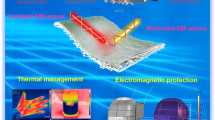Abstract
Wire bonding processes has been widely adopted in micro-electromechanical systems (MEMS) packaging especially in biomedical devices for the integration of components. In the first process sequence in wire bonding, the zone along the wire near the melted tips is called the heat-affected zone (HAZ). The HAZ plays an important factor that influenced the looping profiles of wire bonding process. This paper investigates the effect of dopants on microstructures in the HAZ. One precent palladium (Pd) was added to the as-drawn 4N gold wire and annealed at 600°C. The addition of Pd was able to moderate the grain growth in the HAZ by retarding the heat propagation to the wire. In the formation of the looping profile, the first bending point of the looping is highly associated with the length of the HAZ. The alloyed gold wire (2N gold) has a sharp angle at a distance of about 30 m from the neck of the wire with a measured bending radius of about 40 mm and bending angle of about 40° clockwise from vertical axis, while the 4N gold wire bends at a longer distance. It also shows that the HAZ for 4N gold is longer than 2N gold wire.
Similar content being viewed by others
References
W. Fissell, S. Manley, A. Westover, H.D. Humes, A.J. Fleischman, and S. Roy, ASAIO J. 52, 221 (2006).
A. Saito, T. Aung, K. Sekiguchi, and Y. Sato, Ther. Apher. Dial. 10, 342 (2006).
H. Sharma, P.A. Alvi, I.S. Dalela, and J. Akhtar, Sens Transducers J 115, 1 (2010).
B.Y. Wang, Proceeding of HDP 2004, 160 (2004).
T.R. Hsu and J.R Custer, MEMS Packaging, ed. T.R. Hsu (London: The Institute of Electrical Engineers, 2004), p. 7
M.N. Zulkifli, S. Abdullah, N.K. Othman, and A. Jalar, Gold Bull. 45, 115 (2012).
T.D. Hund and P.V. Plunkett, Manuf. Technol. 8, 446 (1985).
K. Maki, Y. Nakata, M. Nagao, and A. Mishima, J. Microelectron. Electron. Packag. 4, 45 (2007).
S.-A. Gam, H.-J. Kim, J.-S. Cho, Y.-J. Park, J.-T. Moon, and K.-W. Paik, J. Electron. Mater. 35, 2048 (2006).
R. Ramesham and R. Ghafkian Challenges in Interconnection and Packaging of Microelectromechanical Systems (MEMS), 50th. Electronics Components and Technology Conference Proceedings, Las Vegas, NV, 21–24 May 2000, pp. 666–675
N. Maluf, An introduction to microelectromechanical systems engineering (Boston: Artech House, 2000).
L. Maiocco, D. Smyers, P.R. Munroe, and I. Baker, IEEE Trans. Compon., Hybrids, Manuf. Technol 13, 592 (1990).
G.H. Ebel, J.A. Jeffery, and J.P. Farrell, Manuf. Technol. 5, 441 (1982).
M. Poonawala, Evaluation of Gold Wirebonds in ICs Used in Cannon Launched Environment, in 33rd Electronic Components Conference, Orlando, pp. 189–192 (1983)
L. Yuetao, L. Yanjie, and S. Lining, Heat affected zone in MEMS wire bonding, in International Conference on Measuring Technology and Mechatronics Automation, Zhangjijiaje, Hunan, 11–12 April 2009, pp. 825–828 (2009)
J. Onuki, M. Koizumi, and I. Araki, Manuf. Technol. 10, 550 (1987).
Fuliang Wang, Yun Chen, and Lei Han, Microelectron. Reliab. 52, 1105 (2012).
G.G. Harman, Reliability and yield problems of wire bonding in microelectronics, 1st edition (International Society of Hybrid, 1989), pp. 100–102
T.H. Ramsey, Solid State Technol. 16, 43 (1973).
H.K. Charles, in Micro- and opto-electronic materials and structures: physics, mechanics, design, reliability, packaging, ed. by E. Suhir, Y.C. Lee, C.P. Wong (Springer, US, 2007), pp. B71–B120
C. Dresbach, M. Mittag, and M. Petzold, Elastic properties of bonding wires, in 3rd Electronic System-Integration Technology Conference (ETSC), Berlin, 13–16 Sept 2010, pp 1–4 (2010)
S. Wakabayashi, A. Murata, and N. Wakobauashi, Plat. Surf. Finish. 69, 63 (1982).
Author information
Authors and Affiliations
Corresponding author
Rights and permissions
About this article
Cite this article
Ismail, R., Omar, G., Jalar, A. et al. The Influence of Pd-Doped Au Wire Bonding on HAZ Microstructure and Looping Profile in Micro-Electromechanical Systems (MEMS) Packaging. J. Electron. Mater. 44, 2507–2513 (2015). https://doi.org/10.1007/s11664-015-3812-7
Received:
Accepted:
Published:
Issue Date:
DOI: https://doi.org/10.1007/s11664-015-3812-7




